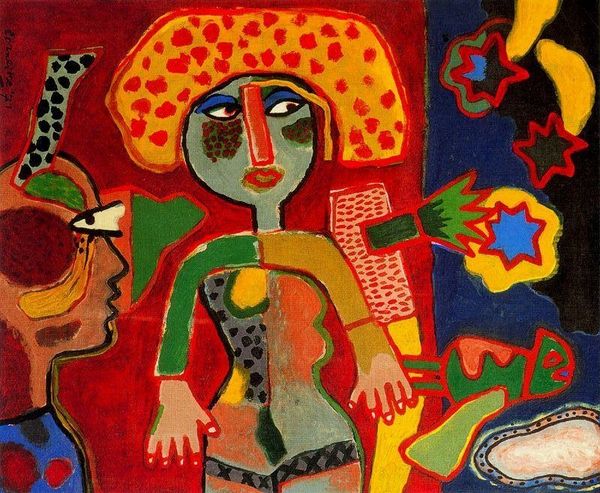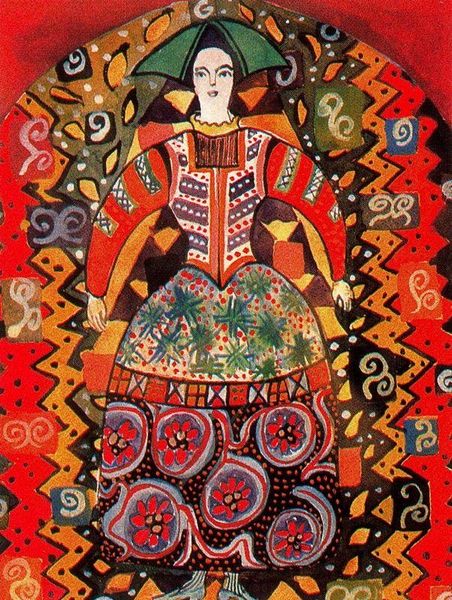
Copyright: Public domain US
Curator: Look at the captivating use of oil paint in Martiros Sarian’s "Still Life" from 1913. The piece pulses with an immediate sense of visual poetry. Editor: I'm struck by how this feels like more than just a still life; there’s a portrait subtly integrated within the arrangement. It really begs questions about how identities, particularly perhaps female identities given the headscarf, become intertwined and almost obscured within societal constructs. Curator: Yes, that is quite powerful. And consider the orientalist undercurrent, noticeable through both color choice and stylistic expression, creating a visual vocabulary influenced by Eastern aesthetics within a Post-Impressionist frame. It evokes an enduring symbolic bridge. Editor: That aesthetic feels deeply political. Orientalism is never a neutral perspective; its artistic representations frequently served—and continue to serve—colonial power structures. Are these flowers a representation of cultural richness or an appropriated and tamed form of it? The placement beside a woman's face shrouded by headscarf creates such complex layers. Curator: Certainly, it's a complex conversation. The expressionist brushstrokes, although evoking emotion, maintain a careful distance, and that is why it becomes so thought-provoking. These stylistic elements might represent a conscious dialogue with Western art traditions. There's a blend of familiar symbols re-coded in this unique Armenian lens. Editor: Right, that’s critical. How do we see this dialogue contributing to discussions around female representation within both Eastern and Western artistic frameworks? Her gaze seems so knowing. I wonder if this is Sarian's way of questioning these visual languages? The dialogue the painting stimulates certainly seems very timely and critical. Curator: Exactly, so there are enduring aspects regarding how this visual language interacts within art. It gives an introspective depth to symbols that transcend singular definitions. Editor: Agreed. Reflecting on "Still Life," it’s clear the conversation it fosters about representation, identity, and historical context remains deeply relevant today, prompting essential critical thinking and further investigation into the world represented through it.
Comments
No comments
Be the first to comment and join the conversation on the ultimate creative platform.













